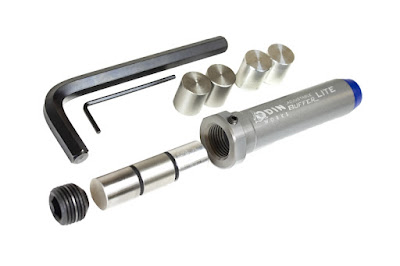A recent plot complication with
my AR gave me pause to do a little thinking.
It was double feeding with a variety of magazines. Having eliminated the most likely cause of
feeding problems, (deformed and damaged magazines), I went to the next best
option.
Nope, not my reloads. Both cheap and expensive factory rounds
contributed to my problem.
Next step, clean the gun. It wasn’t that dirty.
 |
| You see more about my folding stock alteration at http://tactical-talk.blogspot.com/2021/12/silvan-arms-ar-folding-adapter.html |
In any case, the gun now runs
fine.
That's about the extent of my
kitchen table gunsmithing. I do not
believe in alterations like B.A.D. levers from Magpul, but they can make the
gun a little more friendly for the left-handed shooter. (https://magpul.com/bad-lever-battery-assist-device-ar15-m4.html?mp_global_color=118.) Changing out safeties, releases, springs, or
altering its guts all seem like a bad idea.
 |
| Maybe a better modification is an expanded trigger guard for gloved fingers. |
Much of my resistance comes from my belief that I may be unable to get to my customized weapon. Are you capable of smoothly functioning with a stock gun?
You may find yourself accused of
altering the weapon in court to make it more deadly, more punishing, and easier
to kill with. Making the gun more
reliable is a safety feature and safety is always defensible.
 |
| Gives you options to change the weight of the recoil buffer and begs the question will the restraining set screw fail? |
Find William Starnes's "Selection AR Buffers" article in the Aug. 23 edition of "Shooting Sports Retailer." The publication is geared to market products to dealers and help them sell. Starnes explains how the AR system works and how modifications affect the performance.
One modification is an adjustable
gas block for the AR. Many shooters
believe they can better tune their AR for their bullet weight, powder charge,
barrel length, and other factors to reach an optimal, reliable cycle rate. They can, but they may end up on the road of
unreliable function.
The better option is changing the
buffer weight. I shoot an H3, the most
common heavy-weight buffer. It slows the
cycle rate down (it still cycles faster than I can reset the trigger and fire a
second round.) More than one gunsmith
has told me that a slower cycle rate makes for a more reliable weapon.
 |
| I'd make sure I had removable tread lock before I started experimenting. |
But for those who want to
experiment, Starnes has a reasonable solution.
Odin Works and other companies make a buffer weight you can alter in the
field to give you H, H1, H2, and H3 weights.
This is the least invasive kitchen table gunsmithing you can do. More importantly, it is easily reversible.
But he has a word of warning and
advice for the retailer you should heed:
"If the customer uses their gun as a duty weapon or as one for
critical situations, they should stick with factory combinations to ensure
reliability."
Enough said!
Comments
Post a Comment